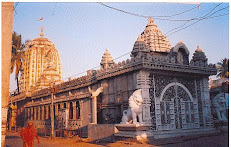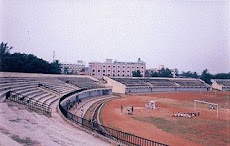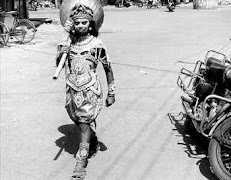 |
| Source: The Hindu |
Berhampur is famous for its
intricately designed silk sarees and handloom clothes across the country for
which it is popularly known as the Silk City, but the handloom industry in the
city is in dying condition due to lack of proper vision on the part of the
Government to save the age-old cottage industry and heritage of the State. Civil
society members of the city have expressed grave concern over Government apathy
towards the poor weavers who are passing through the worst period in their
vocation. Since long they are after the Government for development of the
handloom industry but to no effect. A civil society member and former Deputy
Speaker of the Odisha Legislative Assembly Rama Chandra Panda has written a
letter to the President of India citing the problems of the weavers of the city
as well as of the entire Ganjam district. In the letter, Panda said the city
has immense potential in the cottage industry which should be saved by
extending necessary support. “Of late, due to cost burdens and non-paying
labour, the industry is in dying stage which needs an overall review of the
functioning of the cottage industry in the district,” Panda said, adding, “To
motivate the skilled artisans to continue in the vocation for uplift in the
local economy and generation of employment, the looms should be modernized
while providing continuous technical support for aftercare.”
The traditional class of weavers
in the Silk City is known as ‘Dera community’
comprising about a thousand families mostly residing in Ganesh Nagar, Balmikipeta,
Chandrama Street
in the city. There are also large numbers of people of the weavers, community
residing in different parts of the district and engaged in spinning and weaving
activities since time immemorial. Few such villages are Kumbharipada, Pailipada,
Pitala, Padmanabhapur, Nuapada, Nuapenth, Kullad, Beguniapada, Kanteikoli, Kanchuru,
Makarjhola, Hinjilikatu and Potlampur. The weavers of the city in particular
are producing both elegant cotton and silk sarees through traditional weaving
by indigenous looms. In course of time some of these families in order to
coordinate their activities organised themselves into registered and
unregistered societies or groups under the initiative of the Textile and
Handloom Department of the State Government.
However, at present three such
successful registered societies, each having 30 members, are functional and
they are reportedly performing well. The societies are supplying silk at 10 per
cent margin to the weavers and purchasing finished goods from them, selling the
products through society outlets at 10 per cent margin to the public to
encourage sale. Besides the 100 weaver families covered by three societies, there
are reportedly 300 other individual weaving families who are engaged in
spinning, weaving, dying and manufacturing both cotton and silk clothes, sarees
and various other types of clothing materials carrying high legacy. The margin
given by the Societies are being reimbursed by the Government. In recent past, the
Government sources supplied 30 interlocking slay looms and trained the artisans
to add skill potential, of which at present 10 such modernised looms are
working while 20 such looms are closed reportedly due to lack of skill
assistance and aftercare service. Lack of sustainable infrastructure
discourages the artisans to resort to modern means, Panda wrote. He said it is
understood that local textile authorities have proposed to install a CAD unit
along with Transfer Technology Facility Centre at Brahmapur by establishing
Training-cum-Production Centre for Weavers to facilitate skill upgradation, providing
aftercare service, model weaving and designing which eventually would wipe out
the difficulties as narrated above. This proposal being in the pipeline needs
to be implemented at the earliest, demanded Panda.
Panda further demanded allocation
of Government land to establish Residence-cum-Weaving Centres and commuaity
centres to promote skill development as most of the weavers have no homestead
land to establish looms for their rehabilitation and development. By this, spinning
and weaving would become fulltime vocation in which a large number of women can
be engaged to achieve self empowerment, he added. He also demanded that the
skilled artisans after attaining 60 years should be covered under old age
pension, ESI insurance and other facilities. Government of India should
formulate a model policy for uniform application of such welfare measures and
the weavers need to be covered under Thrift Fund Deposit scheme by providing
matching grant in order to cover the statutory welfare schemes to make the
vocation fulltime and secure, he suggested. “These measures may help empowering
hundreds of spinners, weavers and connected artisans both in the city and in
its periphery, thereby strengthening sustainable opportunity for economic growth as mandated in the Directive
Principles of State Policy in our Constitution,” Panda concluded.
Source: The Pioneer





.jpg)























.jpg)

















































